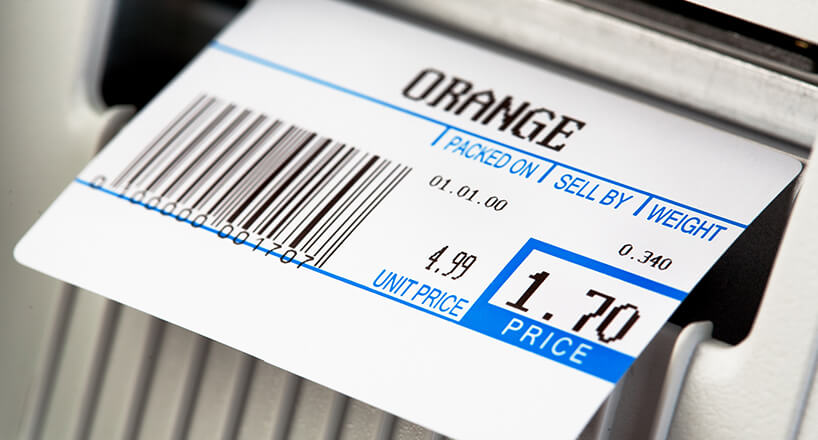Thermal paper is everywhere, from grocery stores and gas pumps to schools and concert halls. Learn how thermal papers work and why the market is growing.
Thermal printing, first invented in the 1960s, went mainstream with the introduction of the fax machine. These days, thermal printing and the special heat-activated thermal paper it requires are ubiquitous.
Rarely does a day go by without the average consumer receiving a receipt printed on thermal paper. Most shipping box labels are produced using thermal printers. And anyone who has attended a sporting event or concert recently has received a ticket printed on thermal paper.
Some thermal printers use a heat-activated ink ribbon to create the images on plain paper. But more often, the paper itself is coated with a special heat-activated ink. When the paper is exposed to heat via a thermal print head, microcapsules in the coating break open to release the dye that creates the image or text.
It’s a simple process that has quickly become a leading method for printing one-off documents like receipts, lottery and event tickets, labels and more. Thermal printing is relatively inexpensive because the printers, which are widely available, don’t require consumable supplies like ink or toner.
Curtis Correll, senior product manager for Domtar’s thermal papers, explains that thermal printing is ideal for variable data printing. “For example, an event ticket has a lot of static information on it, like logos and team names, that can be printed with traditional printing processes,” he says. “But it also has your section, row and seat number, which is specific to you. That variable information can be printed on a ticket that has a thermal ink coating.”
Domtar produces base paper for a wide range of thermal printing applications. The paper is sold to a company that coats it with the heat-activated ink; the coater then sells the paper to a converter, where it is converted into its final form. That might involve cutting the paper into rolls for cash register receipts, for example, or coating the paper with an adhesive to make labels.
Labels, in particular, are a growing market segment, thanks in part to the proliferation of online shopping. “Many shipping boxes have two or three thermal barcode labels, because as the boxes are shipped, they are tracked at various locations, and each has its own barcode system,” Correll says. He points out that thermal printing is an ideal system for such labels because it’s convenient and portable, since there is no need for ink cartridges.
Domtar Thermal Paper Makes a Difference
We supply thermal base paper to one of the largest manufacturers of thermal paper products in North America, as well as several other companies. By working with leaders in this space, we have developed significant technical expertise in thermal papers.
We also have manufacturing capabilities that set us apart from other thermal paper manufacturers. “We use a combination of small machines that are great for developing new products, and bigger machines for large-scale applications,” Correll says. “A lot of companies have one size or the other, but we are able to scale products through their entire lifecycle, making us more efficient and saving our customers money.”
But what really sets Domtar apart when it comes to thermal papers — indeed, all of our products — is our quality and variety. “There are hundreds of different thermal printers out there. People need paper that can run across a wide variety of machines for a wide variety of applications,” Correll says. “A thermal coater or printer manufacturer won’t survive long without quality base paper, and that’s what we provide.”
For more information about Domtar’s thermal papers, contact us.







